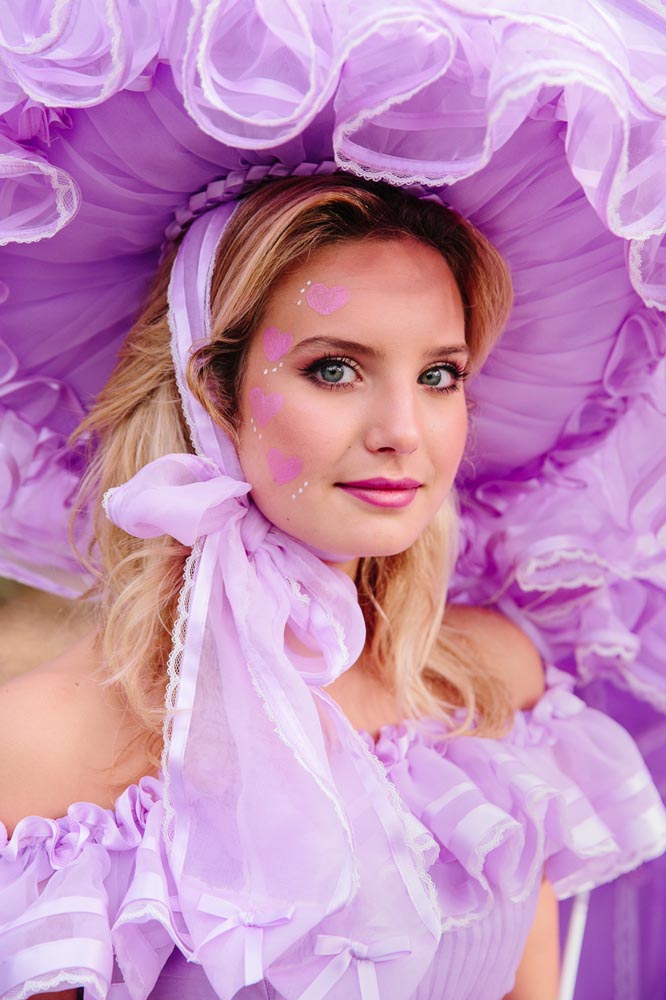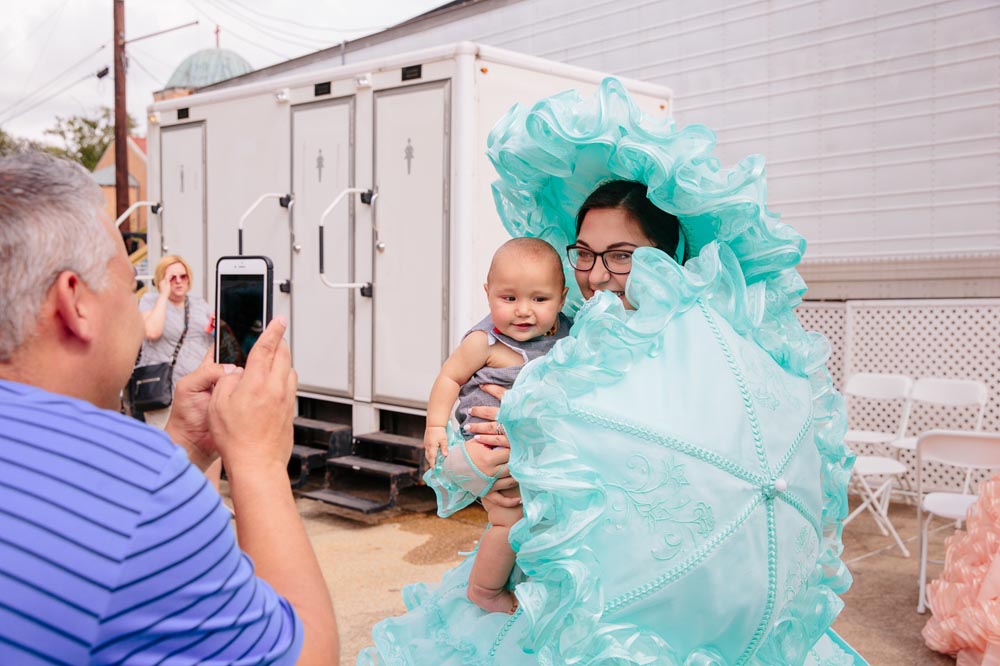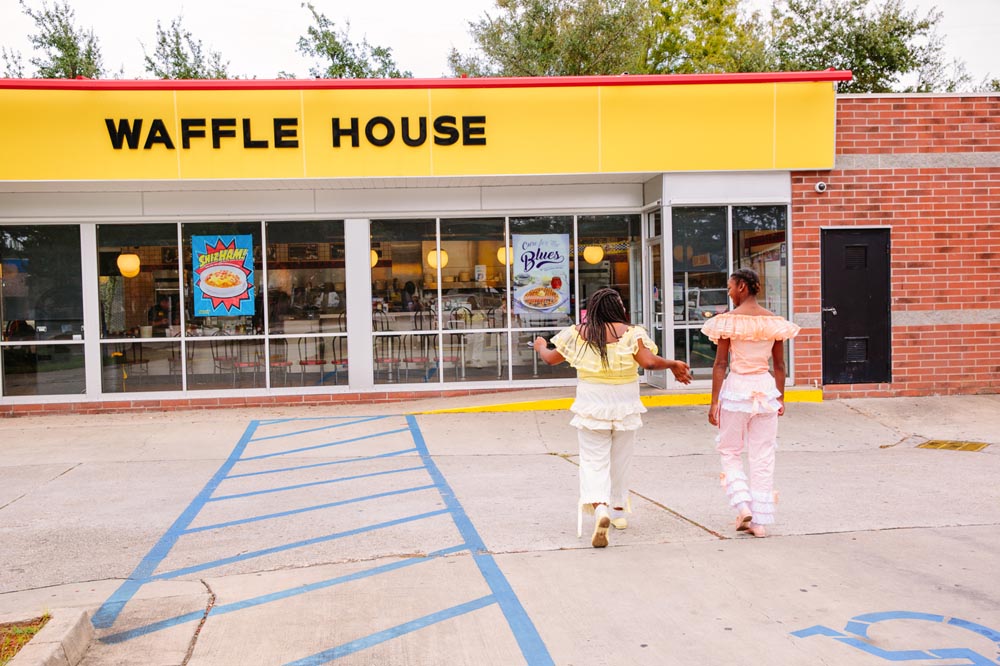











EDITOR'S CHOICE: Artist's Statement
First Place: Adair Freeman Rutledge
Azalea Trail Maids
Each year in my hometown of Mobile, AL 50 high school girls are selected for the century-old court of Azalea Trail Maids. Clad in signature antebellum dresses, these bright, modern young women appear at civic events in smiling silence, despite being selected on merit—a beautiful but troubling reflection of national conversations on gender and race today.

EDITOR'S CHOICE: Artist's Statement
Second Place: Amber Shields
Visions of Johanne – The Aging Female Body
Historically, the aging female body has been marginalized in Western mainstream media. It is rarely seen, much less celebrated, and it remains virtually invisible to younger female generations. This exclusion not only maintains rigid ideas about beauty, ability, and health, but also disempowers and disengages women by stigmatizing a pivotal phase of life. In this series, I wanted to expose and record the physiological, psychological, and sociological experience of the aging woman by photographing my grandmother, Johanne, during the last 15 years of her life.

EDITOR'S CHOICE: Artist's Statement
Third Place: Jodie Hulden
Left Behind
These photographs were taken in Bodie, California, an abandoned gold rush mining town. As the mining opportunities evaporated, the inhabitants had to forsake their lives there and leave behind many of their belongings and their dreams. While the photographs are intimate tableaus of everyday existence, they also tell an incomplete tale and are a forlorn testimony to the vagaries of life. They also speak to the strength of the human spirit in times of hardship and loss, of humanity’s ability to continue on amidst the uncertainties of living.

EDITOR'S CHOICE: Juror's Statement
Bridget Watson Payne
Senior Editor, Chronicle Books
The quality of work submitted to this year’s CENTER Awards was extremely high. It was a joy to view so many powerful images—some beautiful, some wonderfully challenging, some tranquil, some brash—all deeply engaged with the world and the workings of the mind. And, accordingly, it was difficult (at times if felt nearly impossible) to narrow down hundreds of strong portfolios to just three winners. But, as every editor knows, narrow down we must. All three of this year’s winners engage with themes I saw resonating across many of the entries—and, indeed, have seen resonating in the larger photographic community in recent years—but each brings to its theme and subject matter something entirely new and fresh.
Azalea Trail Maids takes a dive into a little-known subculture—in this case a “court” of high school girls who dress in pastel antebellum-style dresses in Mobile, Alabama—and views that subculture through a curious and feminist lens (the photographer points out that: “these bright, modern young women appear at civic events in smiling silence, despite being selected on merit”). While such projects often veer into either adulation or harsh critique, this one is exquisitely balanced. I have rarely seen such a perfect blend of societal appraisal, empathy for the subject, a sense of humor, and an eye for the sublime. In just eleven images we come to love these young women, while at the same time calling into question the cultural forces that have placed them where they are.
What Azalea Trail Maids does for the photographic project of examining a subculture, Visions of Johanne – The Aging Female Body does for portraiture of an elderly relative. The idea of taking one’s own aging parents or grandparents as a photographic subject has been gaining momentum in recent years, but, again, this photographer does something with that material which I’ve never seen before. Perhaps because of her stated aim to counter the societal convention by which the aging female body “is rarely seen, much less celebrated, and…remains virtually invisible to younger female generations,” this photographer has rendered her subject seen to an extraordinary degree. From her incisive glance, manicured hands, and single breast to her crumpled paper medical gown, box of pills, and dish of candy, Joanne is rendered with a clear-eyed tenderness that loses none of its clarity and strength for all its kindness.
Another recent movement in photography is the making of pictures in abandoned interiors. Decay creates interesting tableaus, and the history behind the images is often just as striking. Left Behind, a series of images made in the abandoned gold rush town of Bodie, California, takes that trope and moves it into brand new territory. These photographs are exceptional for several reasons. For one, the intimacy of these vignettes of personal objects (blankets still on beds, coats still on hooks, picture frames, enamel cups, reading glasses) juxtaposed with ruined textures (peeling wallpaper, water-stained wood, tattered fabric) is extraordinary. Second, and even more essential, is the photographer’s use of light. The milky sunlight that permeates these images gives them both a softness and a clarity rarely seen. Rather than being handed spookiness or tragic nostalgia, we are invited to contemplate, among other things: “dreams...the vagaries of life...strength...loss...[and] the uncertainties of living.”

